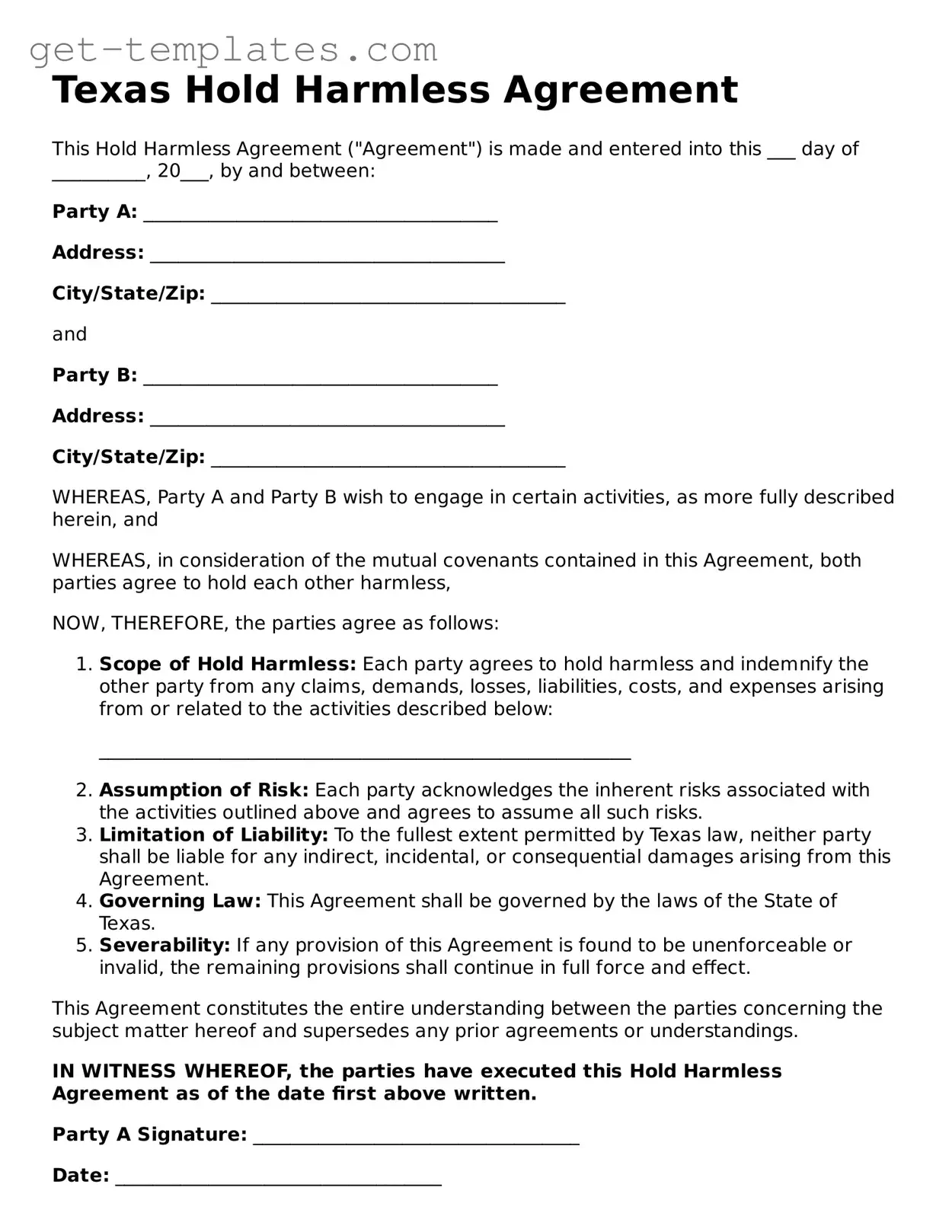Texas Hold Harmless Agreement
This Hold Harmless Agreement ("Agreement") is made and entered into this ___ day of __________, 20___, by and between:
Party A: ______________________________________
Address: ______________________________________
City/State/Zip: ______________________________________
and
Party B: ______________________________________
Address: ______________________________________
City/State/Zip: ______________________________________
WHEREAS, Party A and Party B wish to engage in certain activities, as more fully described herein, and
WHEREAS, in consideration of the mutual covenants contained in this Agreement, both parties agree to hold each other harmless,
NOW, THEREFORE, the parties agree as follows:
- Scope of Hold Harmless: Each party agrees to hold harmless and indemnify the other party from any claims, demands, losses, liabilities, costs, and expenses arising from or related to the activities described below:
_________________________________________________________
- Assumption of Risk: Each party acknowledges the inherent risks associated with the activities outlined above and agrees to assume all such risks.
- Limitation of Liability: To the fullest extent permitted by Texas law, neither party shall be liable for any indirect, incidental, or consequential damages arising from this Agreement.
- Governing Law: This Agreement shall be governed by the laws of the State of Texas.
- Severability: If any provision of this Agreement is found to be unenforceable or invalid, the remaining provisions shall continue in full force and effect.
This Agreement constitutes the entire understanding between the parties concerning the subject matter hereof and supersedes any prior agreements or understandings.
IN WITNESS WHEREOF, the parties have executed this Hold Harmless Agreement as of the date first above written.
Party A Signature: ___________________________________
Date: ___________________________________
Party B Signature: ___________________________________
Date: ___________________________________
